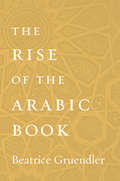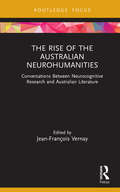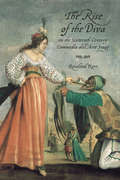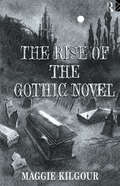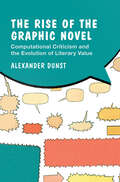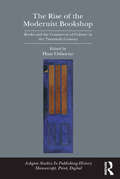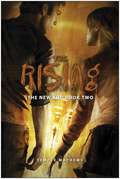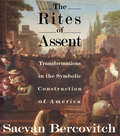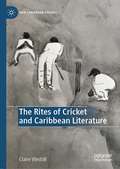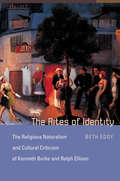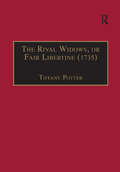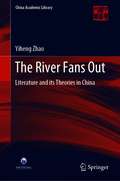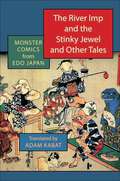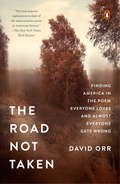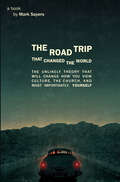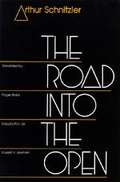- Table View
- List View
The Rise of the Arabic Book
by Beatrice GruendlerThe little-known story of the sophisticated and vibrant Arabic book culture that flourished during the Middle Ages.During the thirteenth century, Europe’s largest library owned fewer than 2,000 volumes. Libraries in the Arab world at the time had exponentially larger collections. Five libraries in Baghdad alone held between 200,000 and 1,000,000 books each, including multiple copies of standard works so that their many patrons could enjoy simultaneous access.How did the Arabic codex become so popular during the Middle Ages, even as the well-established form languished in Europe? Beatrice Gruendler’s The Rise of the Arabic Book answers this question through in-depth stories of bookmakers and book collectors, stationers and librarians, scholars and poets of the ninth century.The history of the book has been written with an outsize focus on Europe. The role books played in shaping the great literary cultures of the world beyond the West has been less known—until now. An internationally renowned expert in classical Arabic literature, Gruendler corrects this oversight and takes us into the rich literary milieu of early Arabic letters.
The Rise of the Australian Neurohumanities: Conversations Between Neurocognitive Research and Australian Literature (Routledge Focus on Literature)
by Jean-François VernayThis exciting one-of-a-kind volume brings together new contributions by geographically diverse authors who range from early career researchers to well-established scholars in the field. It unprecedentedly showcases a wide variety of the latest research at the intersection of Australian literary studies and cognitive literary studies in a single volume. It takes Australian fiction on the leading edge by paving the way for a new direction in Australian literary criticism.
The Rise of the Diva on the Sixteenth-Century Commedia dell'Arte Stage
by Rosalind KerrThe Rise of the Diva on the Sixteenth-Century Commedia dell'Arte Stage examines the emergence of the professional actress from the 1560s onwards in Italy. Tracing the historical progress of actresses from their earliest appearances as sideshow attractions to revered divas, Rosalind Kerr explores the ways in which actresses commodified their sexual and cultural appeal.Newly translated archival material, iconographic evidence, literary texts, and theatrical scripts provide a rich repertoire through which Kerr demonstrates how actresses skillfully improvised roles such as the maidservant, the prima donna, and the transvestite heroine. Following the careers of early stars such as Flaminia of Rome, Vincenza Armani, Vittoria Piissimi, and Isabella Andreini, Kerr shows how their fame arose from the combination of dazzling technical mastery and eloquent powers of persuasion. Seamlessly integrating the Italian and English scholarly literature on the subject, The Rise of the Diva is an insightful analysis of one of the modern world's first celebrity cultures.
The Rise of the Gothic Novel
by Maggie KilgourOne of the central images conjured up by the gothic novel is that of a shadowy spectre slowly rising from a mysterious abyss. In The Rise of the Gothic Novel, Maggie Kilgour argues that the ghost of the gothic is now resurrected in the critical methodologies which investigate it for the revelation of buried cultural secrets. In this cogent analysis of the rise and fall of the gothic as a popular form, Kilgour juxtaposes the writings of William Godwin with Mary Wollstonecraft, and Ann Radcliffe with Matthew Lewis. She concludes with a close reading of the quintessential gothic novel, Mary Shelley's Frankenstein. An impressive and highly original study, The Rise of the Gothic Novel is an invaluable contribution to the continuing literary debates which surround this influential genre.
The Rise of the Graphic Novel: Computational Criticism and the Evolution of Literary Value (Cambridge Studies in Graphic Narratives)
by Alexander DunstBringing digital humanities methods to the study of comics, this monograph traces the emergence of the graphic novel at the intersection of popular and literary culture. Based on a representative corpus of over 250 graphic novels from the United States, Canada, and Great Britain, it shows how the genre has built on the visual style of comics while adopting selected features of the contemporary novel. This argument positions the graphic novel as a crucial case study for our understanding of twenty-first-century culture. More than simply a niche format, graphic novels demonstrate how contemporary literature reworks elements of genre narrative, reconfiguring rather than abolishing distinctions between high and low. The book also puts forward a new historical periodization for the graphic novel, centered on integration into the literary marketplace and leading to an explosive growth in page length and a diversification of aesthetic styles.
The Rise of the Hedge Fund Era: Threats to Journalism and the News Industry
by Qian YuThis book sheds light on the relationship between media ownership and management, particularly in the context of hedge fund ownership in the U.S. news media industry. The book is grounded in two empirical studies: one examining financial issues, and the other examining opinion issues. Study one is a longitudinal study spanning from 2007 to 2022, analyzing 55 annual reports from four newspaper companies over 16 years, including Gannett, Lee Enterprises, Tribune Publishing, and McClatchy. Study Two includes nationally conducted in-depth interviews, targeting individuals in management positions at newspapers acquired by hedge funds, namely Tribune Publishing (acquired by Alden in 2021) and McClatchy (acquired by Chatham in 2019).
The Rise of the Modernist Bookshop: Books and the Commerce of Culture in the Twentieth Century (Studies in Publishing History: Manuscript, Print, Digital)
by Huw OsborneThe trade in books has always been and remains an ambiguous commercial activity, associated as it is with literature and the exchange of ideas. This collection is concerned with the cultural and economic roles of independent bookstores, and it considers how eight shops founded during the modernist era provided distinctive spaces of literary production that exceeded and yet never escaped their commercial functions. As the contributors show, these booksellers were essential institutional players in literary networks. When the eight shops examined first opened their doors, their relevance to literary and commercial life was taken for granted. In our current context of box stores, online shopping, and ebooks, we no longer encounter the book as we did as recently as twenty years ago. By contributing to our understanding of bookshops as unique social spaces on the thresholds of commerce and culture, this volume helps to lay the groundwork for comprehending how our relationship to books and literature has been and will be affected by the physical changes to the reading experience taking place in the twenty-first century.
The Rising
by Temple MathewsWill Hunter's had a rough few months. He just survived the battle of his life. He learned the devil was his father. And his newly demonic best friend Rudy is trapped under glass until Will can find a way to bring him back from the dark side. All Will wants is to lay low for a while with Natalie, the girl he loves, and focus on saving his friend. But Will never seems to get what he wants. In Seattle, Will encounters a dangerous new breed of female demon, faster and more deadly than anything he's ever faced, and a mysterious, striking girl who arrives just in time to save his life. Natalie doesn't trust her, but Will is drawn to her in a way he doesn't fully understand. Is she a powerful new ally? Or will her secrets destroy him and everything he cares about? As the devil's minions work to reassemble their leader's body piece by piece, Will must once again become the New Kid to prevent the Dark Lord from rising—this time for good.
The Rites of Assent: Transformations in the Symbolic Construction of America
by Sacvan BercovitchThe Rites of Assent examines the cultural strategies through which "America" served as a vehicle simultaneously for diversity and cohesion, fusion and fragmentation. Taking an ethnographic, cross-cultural approach, The Rites of Assent traces the meanings and purposes of "America" back to the colonial typology of mission, and specifically (in chapters on Puritan rhetoric, Cotton Mather, Jonathan Edwards, and the movement from Revival to Revolution) to the legacy of early New England.
The Rites of Cricket and Caribbean Literature (New Caribbean Studies)
by Claire WestallThis book analyses cricket’s place in Anglophone Caribbean literature. It examines works by canonical authors – Brathwaite, Lamming, Lovelace, Naipaul, Phillips and Selvon – and by understudied writers – including Agard, Fergus, John, Keens-Douglas, Khan and Markham. It tackles short stories, novels, poetry, drama and film from the Caribbean and its diaspora. Its literary readings are couched in the history of Caribbean cricket and studies by Hilary Beckles and Gordon Rohlehr. C.L.R James’ foundational Beyond a Boundary provides its theoretical grounding. Literary depictions of iconic West Indies players – including Constantine, Headley, Worrell, Walcott, Sobers, Richards, and Lara – feature throughout. The discussion focuses on masculinity, heroism, father-son dynamics, physical performativity and aesthetic style. Attention is also paid to mother-daughter relations and female engagement with cricket, with examples from Anim-Addo, Breeze, Wynter and others. Cricket holds a prominent place in the history, culture, politics and popular imaginary of the Caribbean. This book demonstrates that it also holds a significant and complicated place in Anglophone Caribbean literature.
The Rites of Identity: The Religious Naturalism and Cultural Criticism of Kenneth Burke and Ralph Ellison
by Beth EddyThe Rites of Identity argues that Kenneth Burke was the most deciding influence on Ralph Ellison's writings, that Burke and Ellison are firmly situated within the American tradition of religious naturalism, and that this tradition--properly understood as religious--offers a highly useful means for considering contemporary identity and mitigating religious conflict. Beth Eddy adds Burke and Ellison to a tradition of religious naturalism that traces back to Ralph Waldo Emerson but received its most nuanced expression in the work of George Santayana. Through close readings of the essays and fiction of Burke and Ellison, Eddy shows the extent to which their cultural criticisms are intertwined. Both offer a naturalized understanding of piety, explore the psychological and social dynamics of scapegoating, and propose comic religious resources. And both explicitly connect these religious categories to identity, be it religious, racial, national, ethnic, or gendered. Eddy--arguing that the most socially damaging uses of religious language and ritual are connected to the best uses that such language has to offer--finds in Burke and Ellison ways to manage this precarious situation and to mitigate religious violence through wise use of performative symbolic action. By placing Burke and Ellison in a tradition of pragmatic thought, The Rites of Identity uncovers an antiessentialist approach to identity that serves the moral needs of a world that is constantly negotiating, performing, and ritualizing changes of identity.
The Rites of Knighthood: The Literature and Politics of Elizabethan Chivalry (The New Historicism: Studies in Cultural Poetics #7)
by Richard C. McCoyThis title is part of UC Press's Voices Revived program, which commemorates University of California Press’s mission to seek out and cultivate the brightest minds and give them voice, reach, and impact. Drawing on a backlist dating to 1893, Voices Revived makes high-quality, peer-reviewed scholarship accessible once again using print-on-demand technology. This title was originally published in 1989.
The Ritual Culture of Victorian Professionals: Competing for Ceremonial Status, 1838-1877
by Albert D. PionkeFocusing on the middle decades of the nineteenth century, Albert D. Pionke's book historicizes the relationship of ritual, class, and public status in Victorian England. His analysis of various discourses related to professionalization suggests that public ritual flourished during the period, especially among the burgeoning ranks of Victorian professions. As Pionke shows, magazines, court cases, law books, manuals, and works by authors that include William Makepeace Thackeray, Thomas Hughes, Anthony Trollope, Charles Dickens, George Eliot, and Elizabeth Barrett Browning demonstrate the importance of ritual in numerous professional settings. Individual chapters reconstruct the ritual cultures of pre-professionalism provided to Oxbridge undergraduates; of oath-taking in a wide range of professional creation and promotion ceremonies; of the education, promotion, and public practice of Victorian barristers; and of Victorian Parliamentary elections. A final chapter considers the consequences of rituals that fail through the lens of the Eglinton tournament. The uneasy place of Victorian writers, who were both promoters of and competitors with more established professionals, is considered throughout. Pionke's book excavates Victorian professionals' vital ritual culture, at the same time that its engagement with literary representations of the professions reconstructs writers' unique place in the zero-sum contest for professional status.
The Rival Widows, or Fair Libertine (The Early Modern Englishwoman, 1500-1750: Contemporary Editions)
by Tiffany PotterElizabeth Cooper's The Rival Widows, or Fair Libertine provides a unique opportunity to restore to scholarly and pedagogical attention a neglected female writer and a play with broad and significant implications for studies of eighteenth-century history, culture and gender. Following the adventures of Lady Bellair, a "glowing, joyous young Widow," the storyline regenders standard expectations about desire, marriage, libertinism and sentiment. The play has not been reprinted since 1735; therefore this old-spelling edition gives scholars access to an important but neglected resource for studies of women writers and eighteenth-century theatre. In an original and extensive introduction, Tiffany Potter presents cultural and historical information that highlights the scholarly implications of this newly available play. She offers a brief biographical sketch of the playwright; a summary of sources for specific elements of the play; an overview of the theatrical climate of the time (with particular focus on the conditions leading to the Licensing Act of 1737); a discussion of the place of women in eighteenth-century society; a summary of symbiotic cultural discourses of libertinism and sensibility in the early eighteenth century; and a discussion of the general cultural significance of Cooper's demonstration of the malleability of prescriptive gender roles. Further value is added to this edition through its appendices, which reproduce documents relating to the playwright Elizabeth Cooper and to the Licensing Act of 1737 (including the text of the Act itself).
The River Fans Out: Literature and its Theories in China (China Academic Library)
by Yiheng ZhaoThis book presents 18 highly influential essays on Chinese literature and semiotics by Professor Zhao Yiheng, including his analysis and discussions of the development of Chinese literature and its characteristics from traditional to modern times. It is divided into three parts: traditional Chinese literature, contemporary Chinese literature, and semiotics. In the first part, Professor Zhao summarizes the core elements of narrative cultural relations, ethical dilemmas, and narrative features. He also provides a comprehensive description of the formal structures in Chinese traditional literature. Taking the traditional Chinese play White Rabbit as a case, he discusses the connections between the narrative structure and the characteristics of Chinese novels and stratification of Chinese culture.
The River Imp and the Stinky Jewel and Other Tales: Monster Comics from Edo Japan
by Adam KabatIn Edo-period Japan, readers relished works known as kibyōshi that combined text and illustration on the same page, much like comic books and manga. Monsters often took center stage in these stories. This book presents a selection of Edo monster comics in English for the first time, introducing readers to a captivating, humorous, and eye-opening genre of popular fiction.The River Imp and the Stinky Jewel and Other Tales collects five kibyōshi published between 1778 and 1807, chosen for both entertainment value and stylistic variety. Their authors reinvent traditional Japanese monsters as contemporary characters who mirror the foibles of the human world. They tell stories such as: The lover of the long-necked rokuro-kubi makes a ridiculous attempt to rescue her from her human captor. A mischievous river creature steals a jewel lodged deep inside a boy’s buttocks, setting off a curious chain of events involving a historical samurai and a real-life “fart man.” A demon girl from hell is sent to the world of the living in order to destroy a sacred Buddhist statue—but things don’t go quite as she plans. Exploring the grotesque, comic, bumbling, salacious, and charming world of these creatures, the stories also provide a glimpse into the society and culture of Edo-period Japan through the monsters’ distorted lens. The kibyōshi are reproduced in their entirety, conveying the feel of the original comics and allowing readers to experience the full visual impact of the monsters.
The Riverside Reader
by Joseph F. Trimmer Maxine HairstonThe seventh edition of The Riverside Reader, like its predecessors, presents essays by acknowledged masters of prose style, including George Orwell, Flannery O'Connor, and Maya Angelou, along with many new voices such as Judith Ortiz Cofer, Natalie Angier, John Berendt, and Wendy Lesser. Almost half of the selections are new to this edition. As always, introductions, readings, study questions, and writing assignments are simple, clear, and cogent.
The Road Less Traveled: Seventh Grade Reader (Reading to Learn)
by Tim KennedyThe Road Less Traveled, Grade 7 Reader (Reading to Learn Series)
The Road Not Taken
by David OrrA cultural "biography" of Robert Frost's beloved poem, arguably the most popular piece of literature written by an American"Two roads diverged in a yellow wood . . ." One hundred years after its first publication in August 1915, Robert Frost's poem "The Road Not Taken" is so ubiquitous that it's easy to forget that it is, in fact, a poem. Yet poetry it is, and Frost's immortal lines remain unbelievably popular. And yet in spite of this devotion, almost everyone gets the poem hopelessly wrong. David Orr's The Road Not Taken dives directly into the controversy, illuminating the poem's enduring greatness while revealing its mystifying contradictions. Widely admired as the poetry columnist for The New York Times Book Review, Orr is the perfect guide for lay readers and experts alike. Orr offers a lively look at the poem's cultural influence, its artistic complexity, and its historical journey from the margins of the First World War all the way to its canonical place today as a true masterpiece of American literature. "The Road Not Taken" seems straightforward: a nameless traveler is faced with a choice: two paths forward, with only one to walk. And everyone remembers the traveler taking "the one less traveled by, / And that has made all the difference." But for a century readers and critics have fought bitterly over what the poem really says. Is it a paean to triumphant self-assertion, where an individual boldly chooses to live outside conformity? Or a biting commentary on human self-deception, where a person chooses between identical roads and yet later romanticizes the decision as life altering?What Orr artfully reveals is that the poem speaks to both of these impulses, and all the possibilities that lie between them. The poem gives us a portrait of choice without making a decision itself. And in this, "The Road Not Taken" is distinctively American, for the United States is the country of choice in all its ambiguous splendor.Published for the poem's centennial--along with a new Penguin Classics Deluxe Edition of Frost's poems, edited and introduced by Orr himself--The Road Not Taken is a treasure for all readers, a triumph of artistic exploration and cultural investigation that sings with its own unforgettably poetic voice.
The Road Not Taken
by David OrrA cultural "biography" of Robert Frost's beloved poem, arguably the most popular piece of literature written by an American"Two roads diverged in a yellow wood . . ." One hundred years after its first publication in August 1915, Robert Frost's poem "The Road Not Taken" is so ubiquitous that it's easy to forget that it is, in fact, a poem. Yet poetry it is, and Frost's immortal lines remain unbelievably popular. And yet in spite of this devotion, almost everyone gets the poem hopelessly wrong. David Orr's The Road Not Taken dives directly into the controversy, illuminating the poem's enduring greatness while revealing its mystifying contradictions. Widely admired as the poetry columnist for The New York Times Book Review, Orr is the perfect guide for lay readers and experts alike. Orr offers a lively look at the poem's cultural influence, its artistic complexity, and its historical journey from the margins of the First World War all the way to its canonical place today as a true masterpiece of American literature. "The Road Not Taken" seems straightforward: a nameless traveler is faced with a choice: two paths forward, with only one to walk. And everyone remembers the traveler taking "the one less traveled by, / And that has made all the difference." But for a century readers and critics have fought bitterly over what the poem really says. Is it a paean to triumphant self-assertion, where an individual boldly chooses to live outside conformity? Or a biting commentary on human self-deception, where a person chooses between identical roads and yet later romanticizes the decision as life altering?What Orr artfully reveals is that the poem speaks to both of these impulses, and all the possibilities that lie between them. The poem gives us a portrait of choice without making a decision itself. And in this, "The Road Not Taken" is distinctively American, for the United States is the country of choice in all its ambiguous splendor.Published for the poem's centennial--along with a new Penguin Classics Deluxe Edition of Frost's poems, edited and introduced by Orr himself--The Road Not Taken is a treasure for all readers, a triumph of artistic exploration and cultural investigation that sings with its own unforgettably poetic voice.
The Road Trip that Changed the World: The Unlikely Theory that will Change How You View Culture, the Church, and, Most Importantly, Yourself
by Mark SayersCan&’t find no satisfaction? There&’s no shortage of prescriptions for restlessness out there: Seek adventure. Live your life. Don&’t hold back.Sound familiar?The Road Trip that Changed the World is a book challenging the contemporary conviction that personal freedom and self-fulfillment are the highest good. Like the characters in a Jack Kerouac novel, we&’ve dirtied the dream of white picket fences with exhaust fumes. The new dream is the open road—and freedom. Yet we still desire the solace of faith. We like the concept of the sacred, but unwittingly subscribe to secularized, westernized spirituality. We&’re convinced that there is a deeper plot to this thing called life, yet watered-down, therapeutic forms of religion are all we choose to swallow, and our personal story trumps any larger narrative.This is the non-committal culture of the road. Though driving on freely, we have forgotten where we&’re headed. Jesus said His road is narrow. He wasn&’t some aimless nomad. He had more than just a half tank of gas—He had passion, objectives, and a destination. Do you?
The Road Trip that Changed the World: The Unlikely Theory that will Change How You View Culture, the Church, and, Most Importantly, Yourself
by Mark SayersCan&’t find no satisfaction? There&’s no shortage of prescriptions for restlessness out there: Seek adventure. Live your life. Don&’t hold back.Sound familiar?The Road Trip that Changed the World is a book challenging the contemporary conviction that personal freedom and self-fulfillment are the highest good. Like the characters in a Jack Kerouac novel, we&’ve dirtied the dream of white picket fences with exhaust fumes. The new dream is the open road—and freedom. Yet we still desire the solace of faith. We like the concept of the sacred, but unwittingly subscribe to secularized, westernized spirituality. We&’re convinced that there is a deeper plot to this thing called life, yet watered-down, therapeutic forms of religion are all we choose to swallow, and our personal story trumps any larger narrative.This is the non-committal culture of the road. Though driving on freely, we have forgotten where we&’re headed. Jesus said His road is narrow. He wasn&’t some aimless nomad. He had more than just a half tank of gas—He had passion, objectives, and a destination. Do you?
The Road into the Open
by Arthur Schnitzler Russell Berman Roger Byers<p>A finely drawn portrayal of the disintegration of Austrian liberal society under the impact of nationalism and anti-semitism, The Road into the Open (Der Weg ins Freie, 1908) is a remarkable novel by a major Austrian writer of the early twentieth century. Set in fin-de-siècle Austria―the cafés, salons, and musical concerts frequented by the Viennese elite―Schnitzler's perceptive exploration of the creative process and the private lives and public aspirations of urban Jewish intellectuals ranks with the highest achievements of Karl Kraus and Robert Musil. <p>The novel's central character, Baron Georg von Wergenthin, is a handsome young composer whose troubled relations with women, musical collaborators, and representatives of the old social order make Schnitzler's book a revealing investigation of individual psychology and social allegory. In his comprehensive introduction, Russell Berman situates the book within the literary and political history of Central Europe and analyzes its relation to psychoanalysis, Marxism, musical aesthetics, and the legacy of European modernism.</p>
The Road of Excess: A History of Writers on Drugs
by Marcus BoonFrom the antiquity of Homer to yesterday's Naked Lunch, writers have found inspiration, and readers have lost themselves, in a world of the imagination tinged and oftentimes transformed by drugs. The age-old association of literature and drugs receives its first comprehensive treatment in this far-reaching work. Drawing on history, science, biography, literary analysis, and ethnography, Marcus Boon shows that the concept of drugs is fundamentally interdisciplinary, and reveals how different sets of connections between disciplines configure each drug's unique history. In chapters on opiates, anesthetics, cannabis, stimulants, and psychedelics, Boon traces the history of the relationship between writers and specific drugs, and between these drugs and literary and philosophical traditions. With reference to the usual suspects from De Quincey to Freud to Irvine Welsh and with revelations about others such as Milton, Voltaire, Thoreau, and Sartre, The Road of Excess provides a novel and persuasive characterization of the "effects" of each class of drug--linking narcotic addiction to Gnostic spirituality, stimulant use to writing machines, anesthesia to transcendental philosophy, and psychedelics to the problem of the imaginary itself. Creating a vast network of texts, personalities, and chemicals, the book reveals the ways in which minute shifts among these elements have resulted in "drugs" and "literature" as we conceive of them today.
